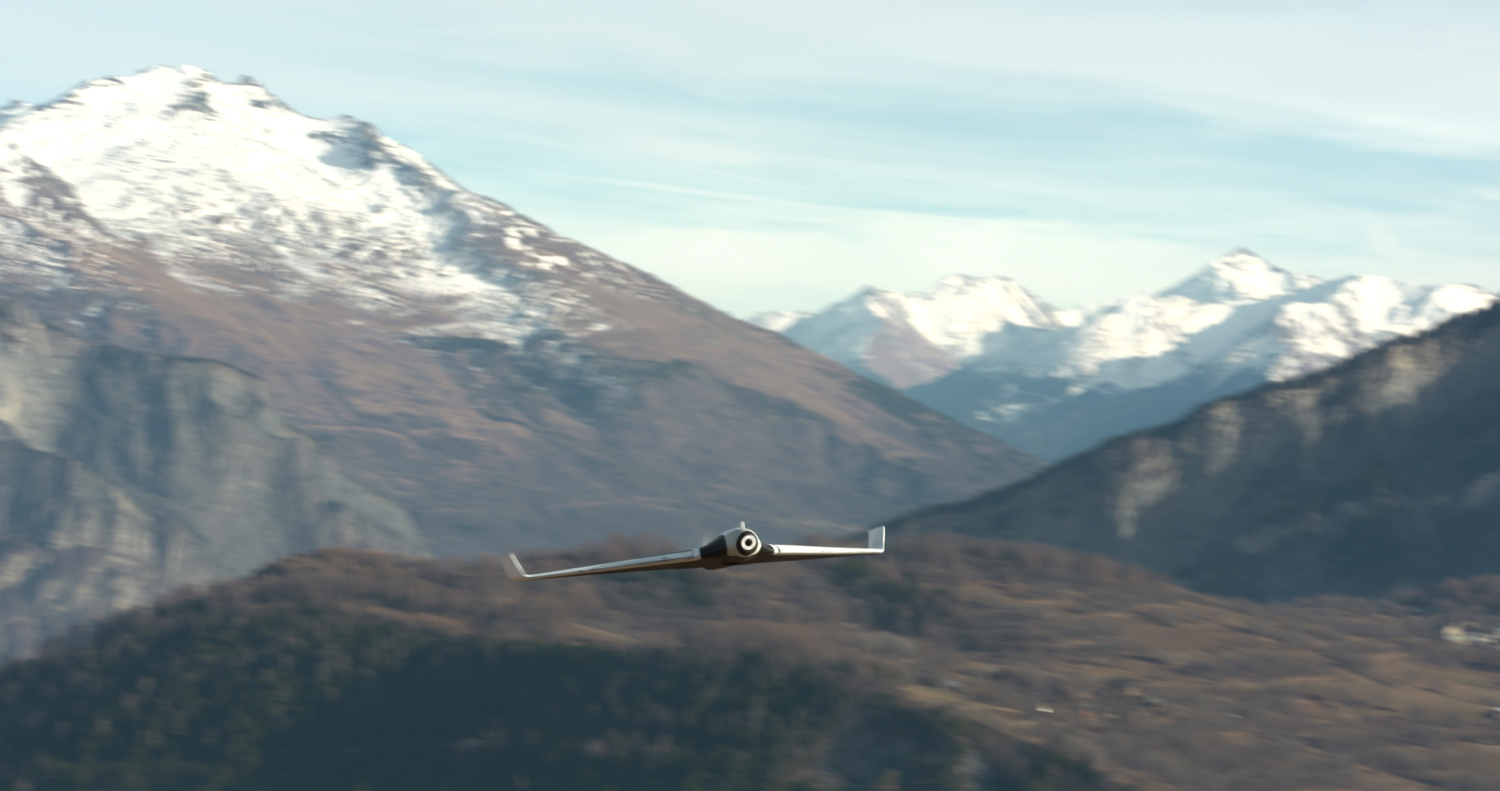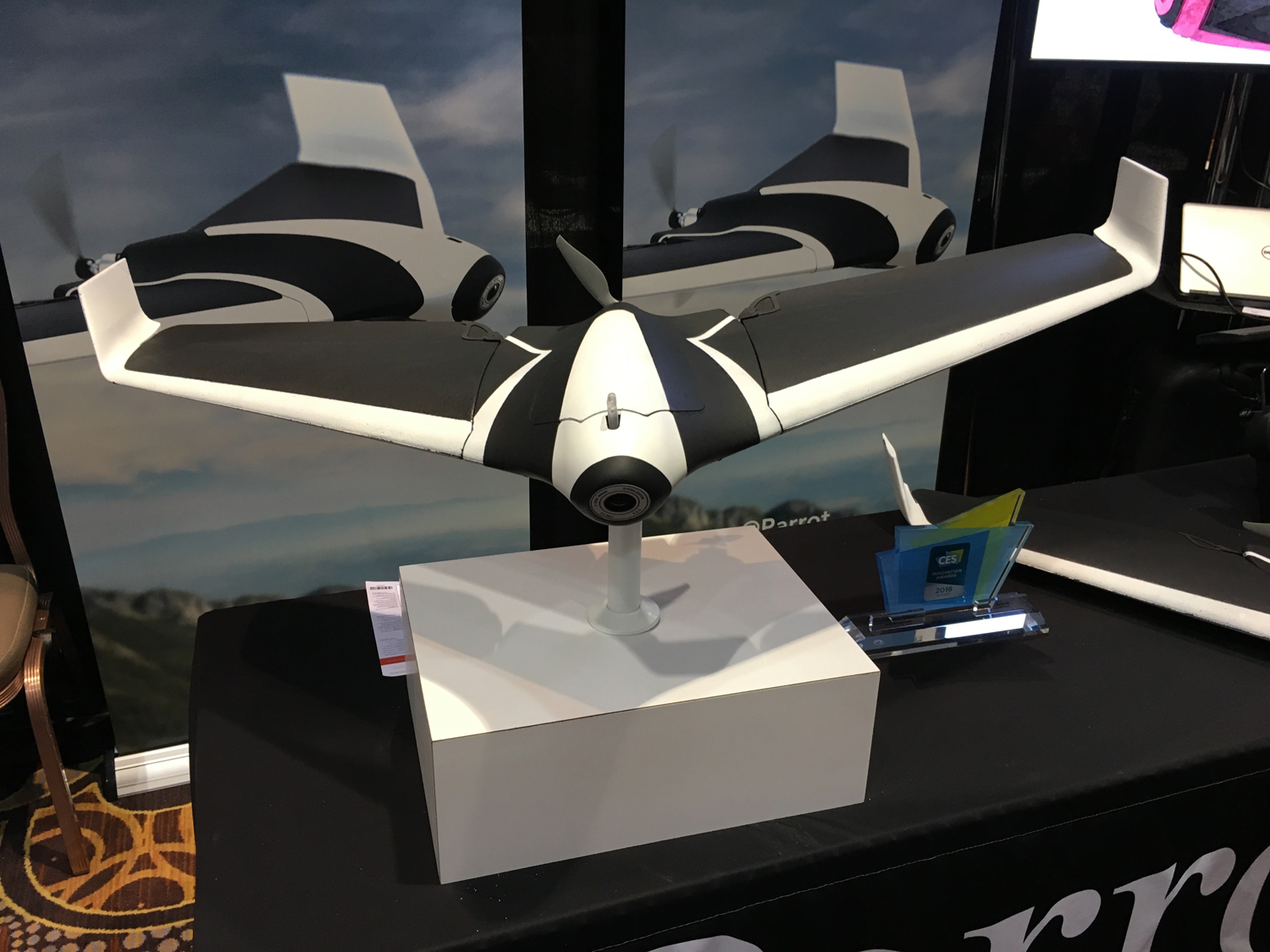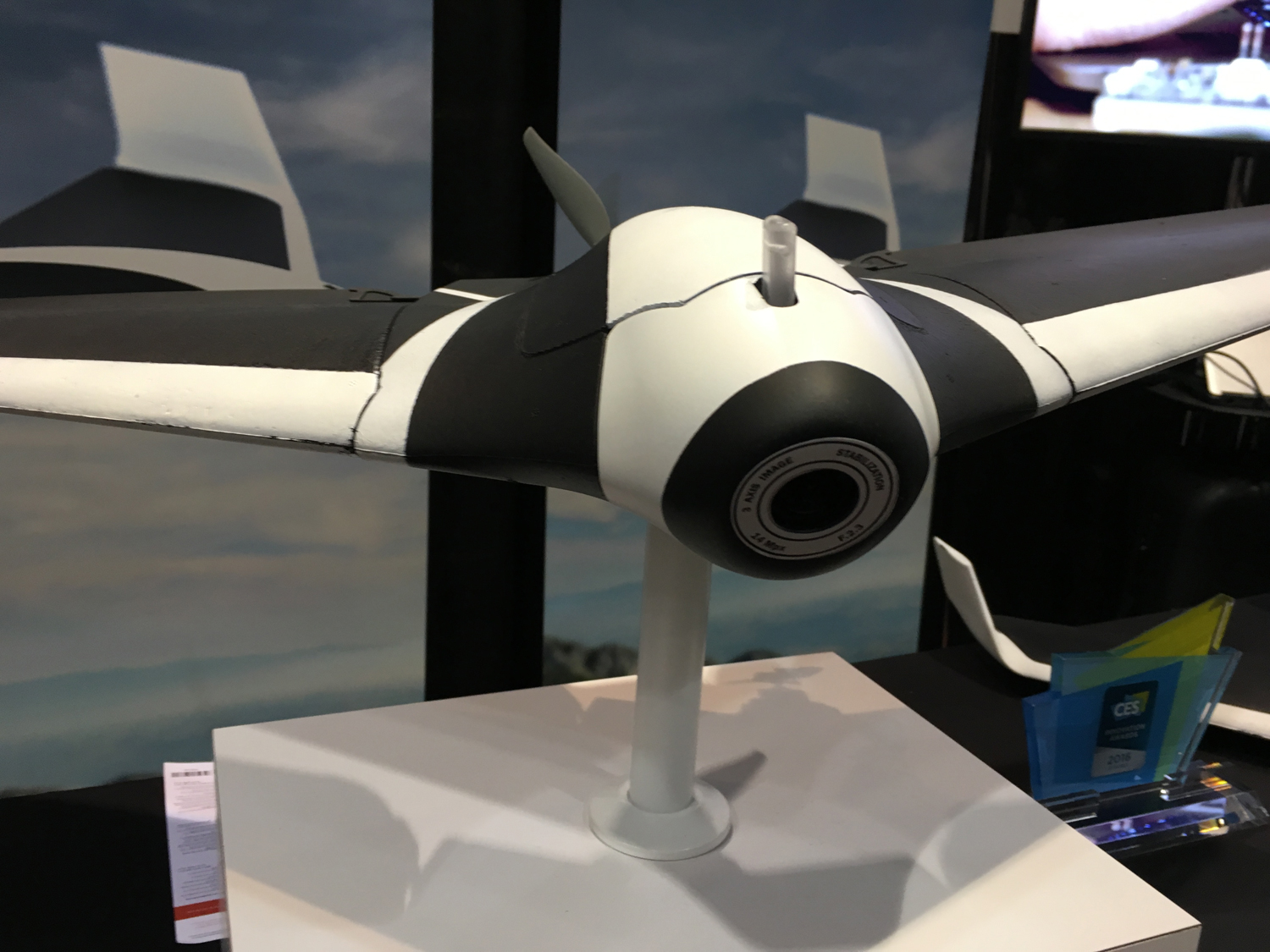Parrot's Fixed-Wing Disco Drone Can Fly 50 MPH
The latest drone from Parrot does away the quadcopter look and features assisted autopilot to help you control things from the ground.

LAS VEGAS — Parrot's latest drone has a new look and an on-board autopilot that can help launch you skyward.
It's unclear just when the Parrot Disco will be ready for takeoff — Parrot will only say that it's expected later in 2016 and hasn't announced a price yet. But there's no mistaking the Disco's distinctive look. It's shed the quadcopter design that's become synonymous with drones for a fixed-wing approach.

That means there's no hovering with the Parrot Disco. instead, the drone is constantly moving forward — it can reach speeds of just under 50 miles per hour — and it's up to you to control both the direction and the altitude of the Disco. Other aspects of the flight, like adjusting the pitch of plain, are handled by the drone's assisted auto-pilot features.
MORE: CES Readers' Choice Awards
The Disco comes equipped with an accelerometer, gyroscope, magnetometer, barometer and other sensors to permanently control its flight. Parrot says the drone will have a 45-minute flight time.
Takeoff's a bit of a departure from what you've come to expect from Parrot's drones, too. You shake the Parrot Disco and then toss the drone into the air, and it autonomously gains altitude. The drone circles overhead until you take control of it and direct it where to go with the Parrot Skycontroller or an RC remote control.

The Parrot Skycontroller is the same device that controls Parrot's recently released Bebop 2 drone, and that's not the only thing the Disco shares with its counterpart. The Disco has the same fisheye lens with a 170-degree view found on the Bebop 2, and it features 32GB of on-board storage for the video you capture.
If you lose connection with the drone, the auto-pilot features direct it back to the takeoff area. You can also define a working area for the Parrot Disco — basically establishing a boundary for how far the drone fly.
Get instant access to breaking news, the hottest reviews, great deals and helpful tips.
When it's time to come in for a landing you'll have two choices. In Circling Mode, the Disco returns to earth the same it left, descending in a circular pattern. The Linear Landing Mode brings down the Disco just like an airplane, with the drone using sonar feedback to detect the approaching ground and reversing the motor to come to a stop.
MORE: What's Next for Drones: Super Selfies, GoPro Karma and Fuel Cells?
A Parrot spokesperson told me that the Disco represents a step up from the $550 Bebop 2 ($800 when it comes with the controller), targeting pilots who are more serious about capturing footage over a larger landscape. We didn't get a chance to take the Parrot Disco out for a spin ourselves — tossing a drone into the air in a crowded exhibit hall is ill-advised, even if that drone weighs less than 700 grams. But we hope to get in a chance to take the drone out for a flight the moment it becomes available.
Philip Michaels is a Managing Editor at Tom's Guide. He's been covering personal technology since 1999 and was in the building when Steve Jobs showed off the iPhone for the first time. He's been evaluating smartphones since that first iPhone debuted in 2007, and he's been following phone carriers and smartphone plans since 2015. He has strong opinions about Apple, the Oakland Athletics, old movies and proper butchery techniques. Follow him at @PhilipMichaels.

